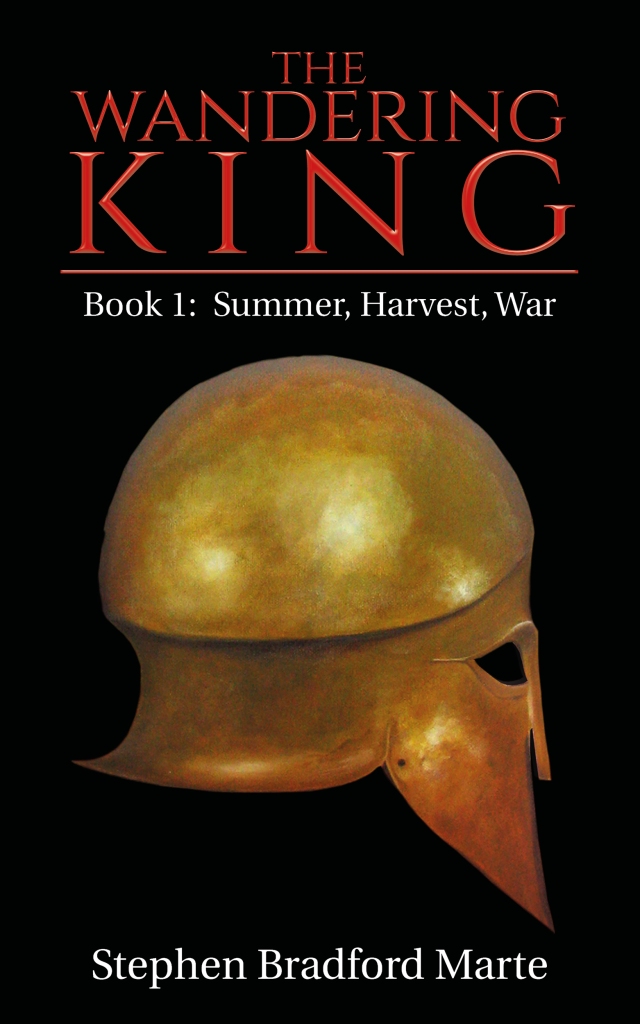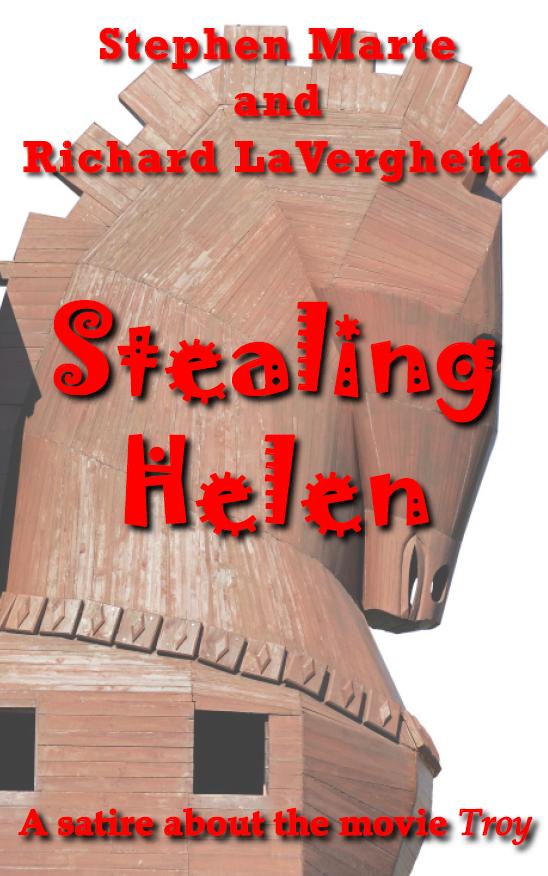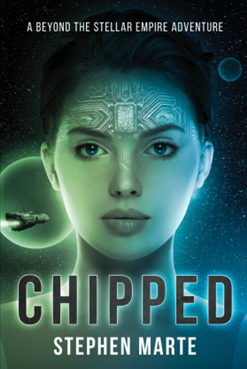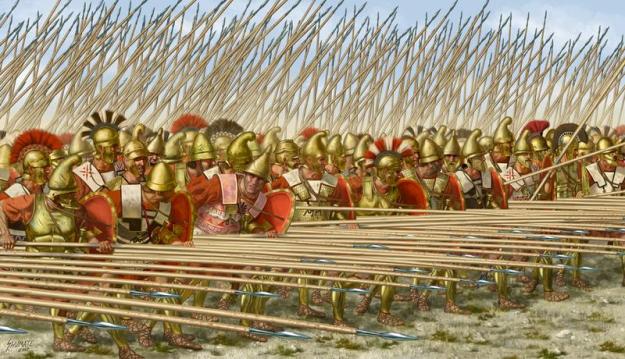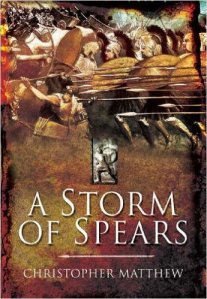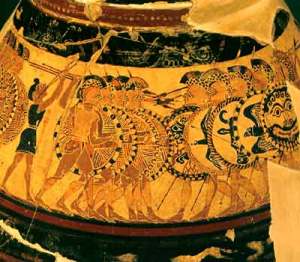
Of the 60 men and women in With This Shield’s character listing, more than 40 are based on real people from ancient Greek history. Below you will find some additional information on 15 of these historical figures. Am also including the pronunciation of their name, as readers have told me they find this helpful.
SPOILER ALERT: Though the data below will not give away the plot of With This Shield, in some cases it will tell you what became of the character in history. I’ve been careful to leave out events covered in the next book in the series, so it does not give away too much information.
Aeschylus (S-kuh-lus)
While only a teenager in With This Shield, Aeschylus will grow up to be one of the most famous dramatic playwrights in Greek literature. Twenty years later, he and his two brothers, Cynegeirus and Ameinias, would take part in the Battle of Marathon (490 B.C.).
Of Aeschylus’ 90 plays, only 7 survive. One of his earliest works, The Persians, is based on his experiences in the naval Battle of Salamis (479 B.C.). It is unique among the Greek tragic plays in that it describes a recent historical event.
Aristides (ah-ris-TĪDE-ēz)
In The Histories, Herodotus describes Aristides as the “best and most honorable man in Athens.” In later years he was called “Aristides the Just.”
His life is recorded by the Greek author Plutarch in his book The Lives of Noble Greeks and Romans. Plutarch states that Aristides and Themistocles were friends when they were young, but they had a falling out because “…both were in love with Stesilaus…”
My favorite story about Aristides occurred when he was older. The Athenians were voting on who to ostracize (the ‘winner’ being exiled for 10 years). An illiterate voter who did not recognize Aristides approached him and asked him to write the name of Aristides on the ballot. When the statesman asked the man if Aristides had ever wronged him, the man said, “No, I do not even know him, but it irritates me to hear everyone call him ‘the Just’.” Honest to the end, Aristides wrote his own name on the ballot and was exiled.
Callicrates (kal-ē-KRAT-ēz)
Callicrates is only mentioned once by Herodotus, who says he was the most handsome man in the Greek army. Thirty years after the events described in With This Shield, he would die at the Battle of Plataea (479 B.C.) while the Greeks were waiting for the Persians to charge and an arrow struck him in the eye.
Herodotus wrote: “Having been carried to the rear, as he lay dying, Callicrates said he was happy to die for Hellas, but it grieved him that he did not get a chance to prove his bravery, that he did no acts of valor worthy of the spirit he had in him to perform great deeds.”
Callimachus (kal-ah-MOCK-us)
Twenty years after the events described in With This Shield, Herodotus lists Callimachus as the polemarch (commanding officer) at the Battle of Marathon. Callimachus led the Athenian right wing and was killed after the Persians were routed and the Greeks were chasing them to their ships.
In Athens, it was customary for the father of the bravest man killed in the battle to give the public funeral oration over the dead. Callimachus’ father and the father of Aeschylus (whose brother Cynegeirus was also slain) argued over whose son was the bravest. Callimachus’ father won.
Years later the Athenians erected a statue on the acropolis next to the Parthenon in his honor, called “The Nike of Callimachus” (the Victory of Callimachus).
Cimon (SĪ-mon)
Miltiades’ youngest son would go on to become one of the most famous statesmen and generals in Athenian history. My depiction of Cimon is based on what we know from Herodotus and Plutarch, who claim he was a great supporter of the Spartans. In later life he wore his hair long in the Spartan style, and named his first son, Lacedaemonius, after the Spartan homeland, Lacedaemonia.
After the Greco-Persian Wars, when the Greeks formed the Delian League to prevent future Persian incursions (the League would become the precursor to the Athenian Empire), Cimon was named as its principal commander. Cimon led most of the League’s military operations from 475-463 BC. During that period, he and Aristides drove the Spartans under Pausanias out of Byzantium (later called Constantinople and today called Istanbul).
His most famous military victory came at the Battle of Eurymedon River (466 B.C.), when he captured or destroyed over 200 Persian warships.
Cleisthenes (KLĪS-thenes)
Cleisthenes was the grandson of the tyrant of the Greek city of Sicyon (also named Cleisthenes). Among his more famous descendants in the Alcmaeonid clan were the Athenian statesman Pericles (builder of the Parthenon) and the orator, statesman and general Alcibiades.
Cleisthenes is remembered in history as the ‘father of democracy.’ While some people consider his reformation of the Athenian constitution giving equal voting rights to all citizens a benevolent act, more than likely he did it to break the hold of the wealthy plains tribes, the Pedieis, over Athens, giving each of the tribes a level playing field.
Cleisthenes called his reforms “isonomia” (equality under the law). It wasn’t until later they would become known as “demokratia” (rule by the people).
Cleomenes (KLE-ah-men-ēz)
Even though Cleomenes reigned for 30 years, during which time he was the key player in Spartan politics, and he accomplished numerous, slick diplomatic maneuvers, Herodotus does not paint a flattering picture of him. He accuses him of being unscrupulous, a drunk and insane. Historians tend to believe that whoever Herodotus spoke to in Sparta to gather information about Cleomenes, was probably among his worst enemies.
Cylon (SĪGH-on)
What we know about Cylon comes from the Syrian neoplatonist philosopher Iamblichus, who wrote in his book, The Life of Pythagoras:
“Cylon was a leading citizen of Croton with all of the advantages of noble birth, fame and riches; but otherwise he was a difficult, violent and tyrannical man who eagerly desired to participate in the Pythagorean way of life. He approached Pythagoras, but was rejected because of his character. Unaccustomed to rejection, Cylon vowed to seek revenge and destroy Pythagoras and his followers.”
The story in With This Shield about the alliance between Cylon and Ninon, who used phony, forged documents, to discredit Pythagoras and inspire the populace to burn down Milo’s house are found in Iamblichus. Whether there is any truth to the story, or if it was part of an oral tradition, is hard to say as Iamblichus wrote 700 years after Pythagoras’ death.
Elpinice (L-pin- ēz)
The daughter of Miltiades, Elpinice, is known from Plutarch’s Life of Pericles, where she appears twice. On both occasions she confronts and rebukes Pericles regarding his political actions.
After the events described in With This Shield, she became the lover of the painter Polygnotus who used her likeness in a painting of Trojan women on a stoa in the Athenian agora. Later, the richest man in Athens, Callias, fell in love with her. At the time, her brother Cimon owed the Athenian state a large sum of money and he married her to Callias to pay off the family’s debts.
Gorgo (GORE-gō)
Euryanax’s cousin Gorgo is among the few women mentioned by Herodotus in The Histories. She is notable for being the daughter of a Spartan king, the wife of a Spartan king and the mother of a Spartan king.
Though little is known about her childhood, like other Spartan girls from a noble family, she would have exercised daily, been well educated, could read and write, and do mathematics. She also would have learned how to drive a chariot and taken part in Sparta’s many festivals, which included dancing and singing in a chorus.
Gorgo is presented by Herodotus and Plutarch as an extremely wise, well-respected woman, who offered sage advice on several occasions. Her most famous remark came when an Athenian woman asked her, “Why are you Spartan woman the only ones who can rule over men?” To which Gorgo replied: “Because we are the only women to give birth to real men.”
Miltiades (mil-TĪE-ah-dēz)
Miltiades is among the more famous Athenians appearing in With This Shield. Will resist talking about his most well-known exploits, which will be detailed in the third book in the series.
Miltiades’ family, the Philaids, claimed descent from the Trojan War hero Ajax the Great. Miltiades’ father won the Olympic Games three times for chariot racing, making him so popular it inspired the jealousy of Athens’ tyrant Hippias, who had him murdered.
Miltiades’ uncle, known as Miltiades the Elder, established an Athenian colony in the Thracian Chersonese (today known as the Gallipoli peninsula) where he set himself up as a tyrant. When Miltiades the Elder died the tyranny passed to Miltiades’ brother Stesagoras, and after his death, to Miltiades. Miltiades cemented good relations with the Thracian tribes in the area by marrying Hegesiplye, the daughter of the Thracian King Olorus.
The Greek historian Thucydides, author of The History of the Peloponnesian War, was a Philaid. His father was named Olorus. Whether it was the same Olorus related by marriage to Miltiades, is unknown.
Othryades (oh-THRAY-dēz)
As noted in the first two books of The Wandering King, Othryades was famous in Sparta as the lone survivor of the Battle of Champions (540 B.C.) between 300 Spartans and 300 Argives.
According to Herodotus, after the battle Othryades was so upset that his companions had all been killed, he committed suicide. My apologies to Herodotus for letting Othryades live.
The image at the top of this post is a photograph of a sculpture done in 1779 by the French artist Sergel, titled “Othryades the Spartan Dying.” It is on display in the Louvre Museum in Paris.
Stesilaus (STES-ah-lāy-us)
The “beautiful and brilliant” Stesilaus from the island of Keos is mentioned in Plutarch’s Lives as the cause of the lifelong enmity between the two Athenian statesmen Aristides and Themistocles.
Like Othryades, I’ve taken some creative license with Stesilaus by turning “him” into a “her.” It’s not that I’m anti-gay. Not in the slightest. I just did not think the story would read as well if two of my characters were fighting over a beautiful young boy. That said, it’s important to realize the role homosexuality played in ancient Greece.
Says Plutarch of Aristides and Themistocles, “They were both in love with Stesilaus of Keos, the most beautiful and brilliant of youths; whom they both cherished so passionately, that not even after the boy’s beauty had faded did they lay aside their rivalry.”
Themistocles (tha-MIS-tōe-clēz)
While I don’t know how many readers are familiar with Themistocles, he is among the most famous Athenian statesmen and generals of all time. I don’t want to reveal too much about him, as his story will continue in the next book in the series.
My depiction of Themistocles in With This Shield is taken from a tidbit of information I picked up while reading Plutarch’s Life of Themistocles. Plutarch describes the young Themistocles by saying, “The wildest colts make the best horses.”
He also says that Themistocles was thrown out of his family by his father Neocles for drinking and carousing. Though this information about Themistocles is debated, it helped form my characterization of him as brilliant, but somewhat wild and unscrupulous.
Plutarch also says that Themistocles was among the first people in history to become a lawyer to launch a political career.
Xanthippus (zan-TIP-ē-us)
Xanthippus was a wealthy aristocrat in Athens, famous in history as the father of the statesmen Pericles, who built the Parthenon and led Athens into its golden age.
Xanthippus married a niece of Cleisthenes named Agariste (Pericles’ mother). Although not an Alcmaeonid, he became closely linked with their family.
Like Aristides, Themistocles, Miltiades, Callimachus and Aeschylus he would fight in the Battle of Marathon. His greatest military victory would come in the last engagement of the Greco-Persian Wars as the commander of the Athenian naval forces at the decisive Battle of Mycale (479 B.C.).
Character request?
Want to know more about a character in The Wandering King series? Let me know, and I’ll do my best to comply.


